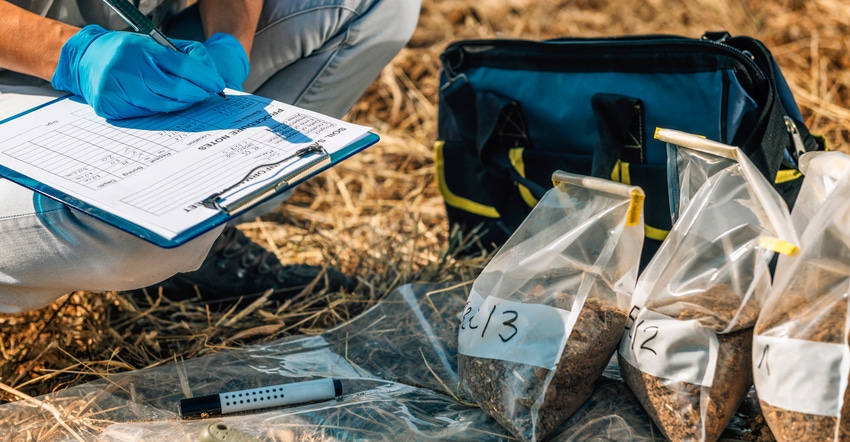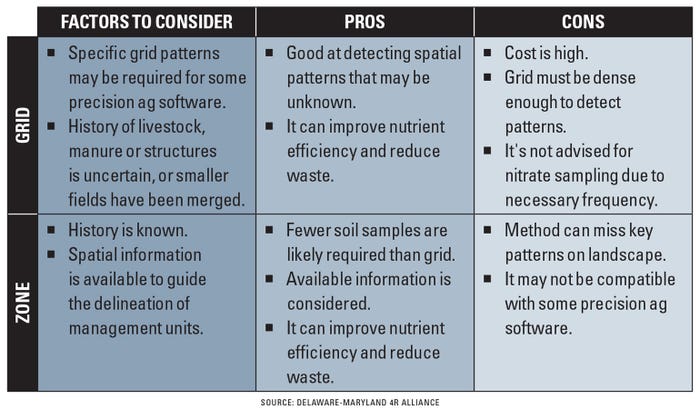July 9, 2021

Efficient nutrient management is part of the foundation of good soil health.
Soil nutrient measurements, part of a common soil test, are considered Tier 1 indicators by the Soil Health Institute due to their established importance to yield, soil health and environmental outcomes.
Due to the importance of 4R nutrient management to soil health, the Maryland Department of Agriculture has begun promoting precision soil sampling as a component of their Healthy Soils Program. The state is offering cost-share for farmers to conduct precision soil sampling to support 4R nutrient management adoption, along with a suite of other conservation agriculture practices.
Overapplying nutrients can have a negative effect on soil microbes, carbon sequestration and water quality, not to mention a waste of hard-earned money. Ensuring that each acre of land receives nutrient applications at the right time, with the right source, in the right place and at the right rate is a critical part of efficient nutrient management.
4R soil sampling is an integral component to answering, “What is the right place and rate?”
Some areas of the field may need different amounts of nutrients or could benefit from more organic matter due to topography, history, irrigation and soil characteristics. An adequate number of samples is necessary to accurately reflect nutrient levels. A field with variable yield or a history of livestock may need more samples than a field that is more uniform.
2 approaches
Precision soil sampling is done either by grid or zones (or directed sampling). Either approach can be used for precision nutrient applications or to better inform other management decisions.

Grid sampling is applied by laying a uniform grid of a particular size over the landscape and sampling a predetermined number of soil samples from each grid unit.
The optimal grid density is an important factor as a denser grid will not only yield more accurate results but also increase the cost. University of Maryland Extension recommends a sampling grid density of 1 to 2.5 acres for phosphorus and potassium, and 5 acres for organic matter.
Alternately, zone sampling can incorporate farmer knowledge and other spatial information, such as yield maps, to create management units. These management units can then be sampled at a lesser density but may miss underlying patterns in the field.
Additionally, grid sampling may be too costly to use on an annual basis for nitrate testing, and zone sampling could be a more effective approach. The choice between the two can be decided by your goals and prior knowledge. The following table lays out the considerations for both approaches.

Be consistent
Some biological and more labile nutrients like nitrate are highly variable throughout the year. To obtain a strong and consistent soil test, it is important to take soil samples at the same time of year, with similar soil moisture, especially if sampling for soil health parameters like active carbon, soil respiration or other biological measures.
Accurate soil fertility information is an important resource for all farmers. A nutrient map developed from either sampling approach is good for three to five years for P and K, 10 years for pH, and 10 to 12 years for organic matter and cation exchange capacity.
Several excellent soil sampling resources were used to develop this article and are available through Extension as well as local agribusiness partners.
Many DE-MD 4R Alliance members offer soil sampling and related analyses to provide their customers with the tools to maximize yield while minimizing environmental impacts. Contact your local agribusiness and ask them about grid or zone sampling.
For more information about cost-share, contact Kevin Antoszewski at 410-841-5866 or [email protected]
Starr is an agriculture conservation specialist with The Nature Conservancy. Eck is with the Delaware-Maryland 4R Alliance.
Read more about:
Soil SamplingYou May Also Like




